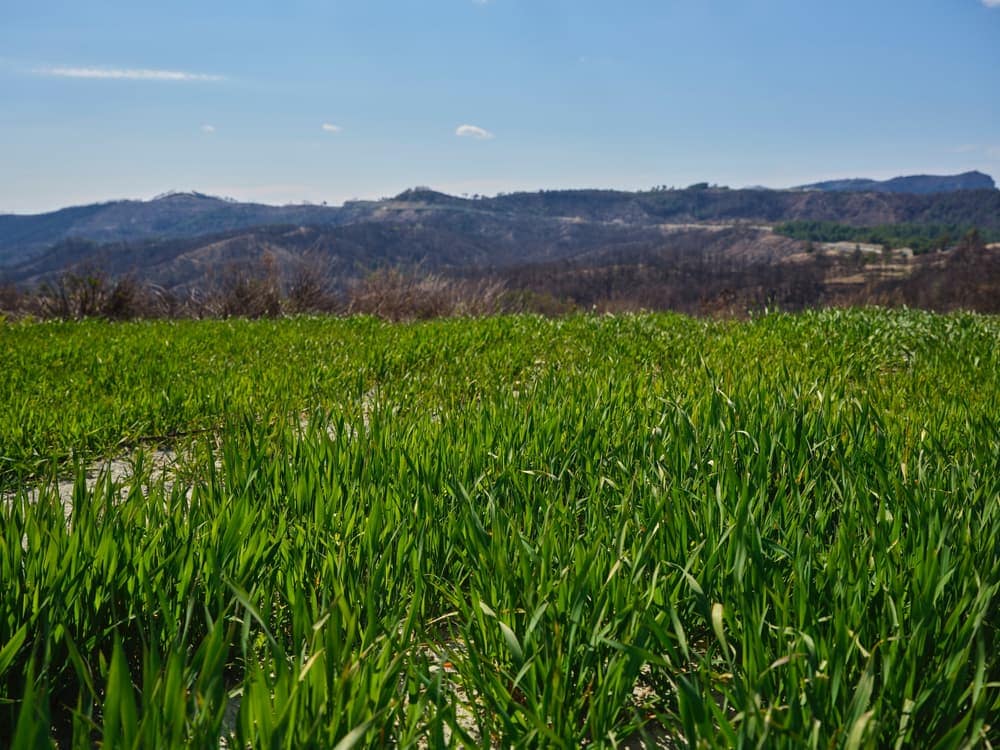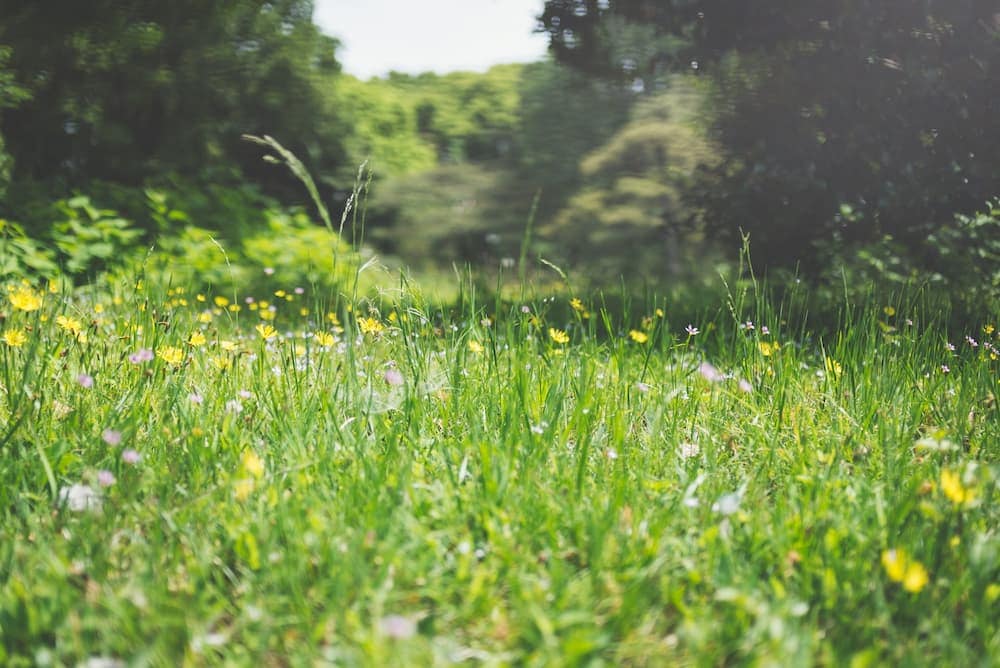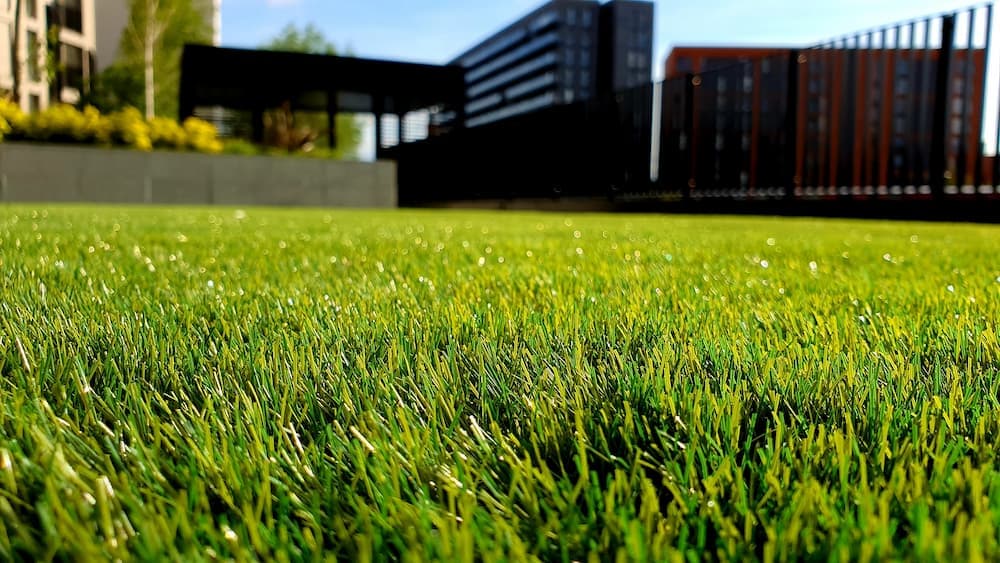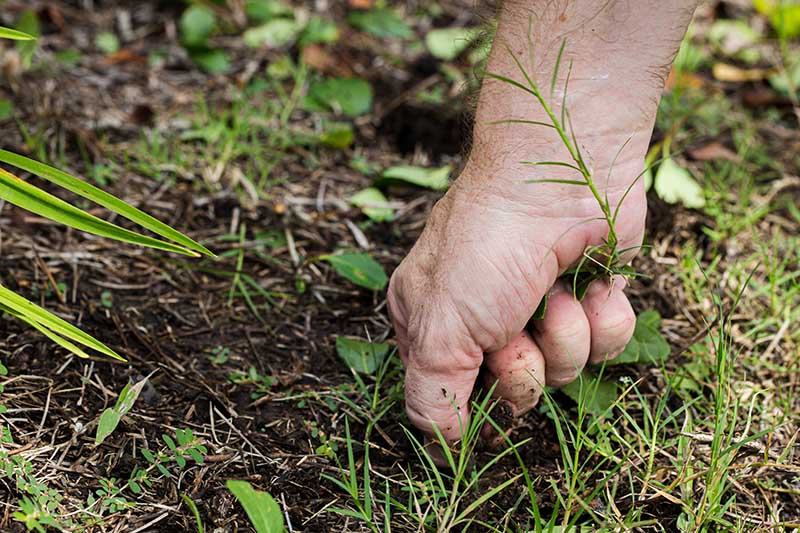How Fast Does Grass Grow? 5 Factors
-
- Last updated:

A carpet-like grass cover is beautiful but hard to maintain. That’s why many homeowners hire professionals to mow the lawn. Maintaining a uniform grass cut is more than just timely mowing—you need to know how fast grass grows.
Here are some answers to this and other frequently asked questions about grass and its growth cycle.
What Is the Growth Rate of Grass?

The growth rate of grass varies from species to species and according to soil and climatic conditions.
Typically, grass will grow, on average, a tenth of an inch within 24 hours. In stable conditions, such as in spring, when the moisture content is high and temperatures are right, the growth rate will easily double to a fifth of an inch per day.
However, some grass species, such as bluegrass, become dormant in cold conditions, and no growth rate will be recorded.

The 5 Factors Affecting the Growth Rate of Grass
As stated, the varying growth rate of grass species depends on several factors.
1. Temperature
Temperature directly influences how grass grows up to an optimal point. The optimal point is the temperature at which the growth rate will be at its peak. Also referred to as the sweet spot, it hovers around 65 and 85 degrees Fahrenheit, which falls in the middle of spring and early summer.

2. Moisture
The amount of water vapor in the air heavily influences the rate at which grass grows. In spring, as the snow melts down and spring rain falls, raising moisture content in the soil will accelerate grass growth.
The growth rate subsequently reduces when the grass is starved of water.
3. Availability of Nutrients
Grass will grow fast in nutrient-rich soil. Soil nutrients such as nitrogen, phosphorus, and potassium are by-products of the microorganism activities in the soil and are essentially the building blocks of an ecosystem.
Of all the three major nutrients, nitrogen, phosphorus, and potassium (NPK), nitrogen is the most important. It gives the grass a deep green color and ensures blades sprout straight and healthy. Lack of nitrogen leads to stunted growth and unattractive plants.
Potassium is also very important and is the equivalent of a spark plug in a gasoline car. It activates over 80 enzymes so that grass can perform major roles, such as absorption of nutrients and photosynthesis. In dry summers, potassium-enriched plants will utilize water properly and recover easily from pest attacks.
Phosphorus, on the other hand, is important for roots. It leads to the development of a strong, healthy, and active root system that will sink very deep to absorb moisture. Without it, plants are easy to pull out and frequently lead to lawn patches.
Organic fertilization also improves soil nutrition. States like New York, which advocate for organic fertilizers, are prevalent with fast-growing grasses. Some of the sources of organic fertilizers include food wastes, rock minerals, and plant wastes which you can convert into manure at no extra cost.
Generally, grass will grow faster if the soil is well balanced with NPK and seasoned with micronutrients from organic fertilizers.

4. Grass Species
Intrinsic characteristics of grass are dominantly considered when choosing the type of grass to grow. They are imprinted in a grass’ DNA and determine what it looks like and how fast it can grow.
There are numerous species of grass that grow at different rates—some are straightforward to grow while others require intensive care, especially in the early days. However, some grass species have proven to grow fast in any environment. These species include perennial ryegrass, bentgrass, and Kentucky Bluegrass. On average, they take 10 days for their seeds to sprout. After that, perennial ryegrass will grow at a rate of 2 to 5 inches per month when there is enough moisture and temperatures are between 60 and 75 degrees Fahrenheit.
On the other end of the spectrum are slow-growing grasses like fescue, chewings fescue, and creeping red fescue. It takes an average of 18 to 21 days for these grass species to sprout.
5. Seasons
Of course, seasons affect the growth rate of the grass. On warm spring days, grass grows the fastest. As rising temperatures pave the way for summer, the growth rate will reduce.
At the very end of the cycle, summer ushers in brutal winter. Rounded off by frost, only a few grass species will record noticeable growth in winter.
But you can always have the green carpet you are craving, irrespective of the season. Plant cold season grass or northern grass such as fescues, ryegrass, and bentgrass as winter sets in. These types of grass grow rapidly during this season.
Warm season grasses include centipedegrass, carpetgrass, and bahiagrass. They are referred to as “southern grass” because they are well adapted to the hot summer temperatures of southern states like Texas, Florida, and Mississippi.


How Do You Speed up Grass Growth Rate?
It is possible that after knowing how amazingly fast grass grows and realizing your lawn is falling back, you want solutions to the problem. Well, you are at the right place. Here is how to speed up the growth rate of the grass.
Remove Debris from the Grass
Debris, such as leaves, especially in autumn, blocks sun rays resulting in stunted growth. Besides that, fallen branches kill the grass. So, rake them out of your lawn within 24 hours after falling.
Weed Your Lawn Regularly

Weeds compete directly with grass for nutrients. It is thus advisable to uproot anything other than grass from your lawn.
Water Consistently
Start watering the lawn after a week goes without rain. Repeat heavy watering weekly until the next rainy season.
•You might also like:How to Get Rid of Condensation in Double-Pane Windows?

Conclusion
Grass grows at a staggering rate of 0.1 to 0.5 inches per day at the peak of the growing season. During this time, temperatures are above 60 degrees Fahrenheit, and the soil is well moist. This, together with essential nutrients (NPK), consistent watering in the dry season, and weeding, will keep your lawn vibrantly green all year round.
Featured Image Credit: Photoman, Pixabay
Contents

